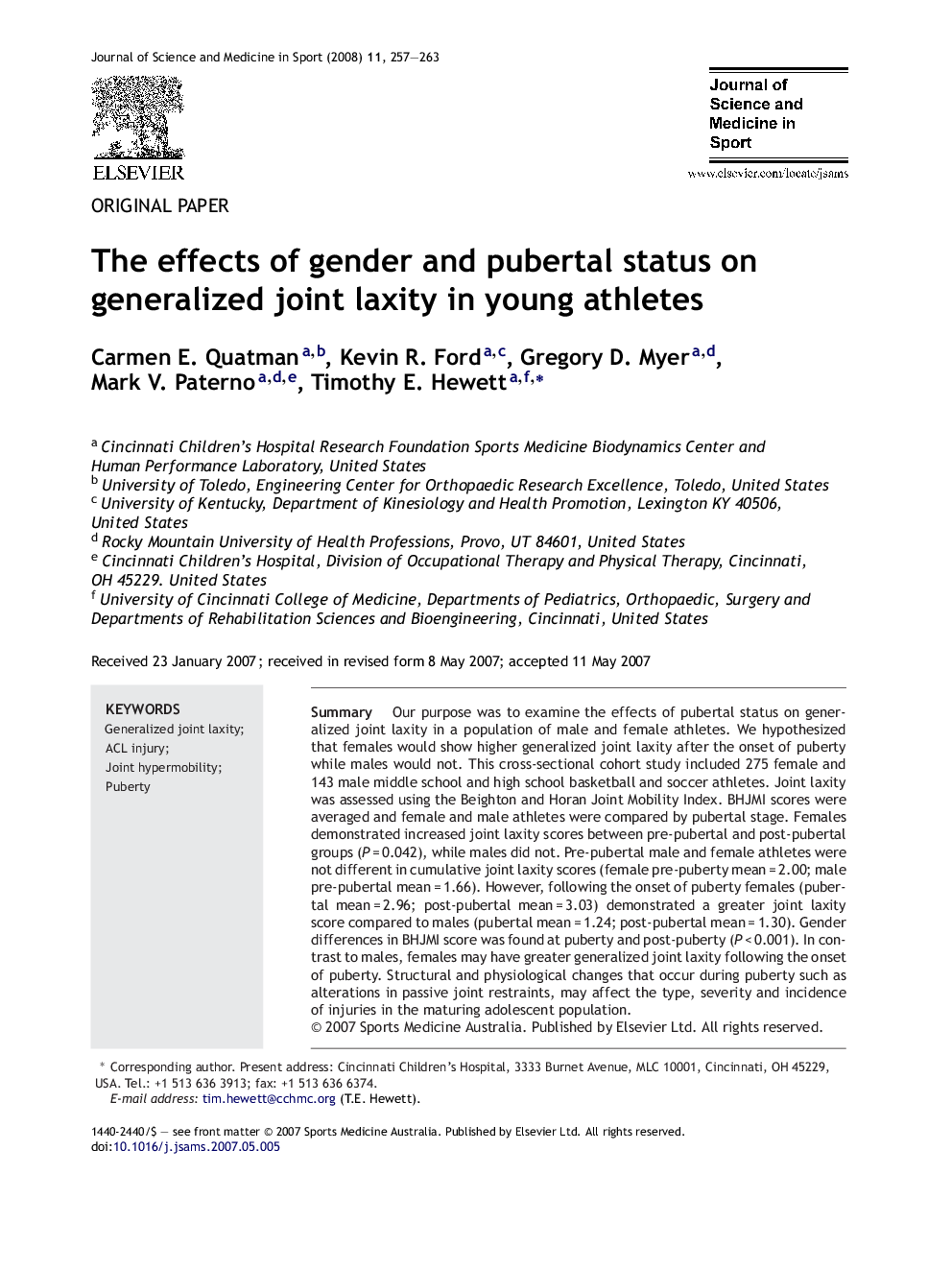| Article ID | Journal | Published Year | Pages | File Type |
|---|---|---|---|---|
| 2701864 | Journal of Science and Medicine in Sport | 2008 | 7 Pages |
SummaryOur purpose was to examine the effects of pubertal status on generalized joint laxity in a population of male and female athletes. We hypothesized that females would show higher generalized joint laxity after the onset of puberty while males would not. This cross-sectional cohort study included 275 female and 143 male middle school and high school basketball and soccer athletes. Joint laxity was assessed using the Beighton and Horan Joint Mobility Index. BHJMI scores were averaged and female and male athletes were compared by pubertal stage. Females demonstrated increased joint laxity scores between pre-pubertal and post-pubertal groups (P = 0.042), while males did not. Pre-pubertal male and female athletes were not different in cumulative joint laxity scores (female pre-puberty mean = 2.00; male pre-pubertal mean = 1.66). However, following the onset of puberty females (pubertal mean = 2.96; post-pubertal mean = 3.03) demonstrated a greater joint laxity score compared to males (pubertal mean = 1.24; post-pubertal mean = 1.30). Gender differences in BHJMI score was found at puberty and post-puberty (P < 0.001). In contrast to males, females may have greater generalized joint laxity following the onset of puberty. Structural and physiological changes that occur during puberty such as alterations in passive joint restraints, may affect the type, severity and incidence of injuries in the maturing adolescent population.
